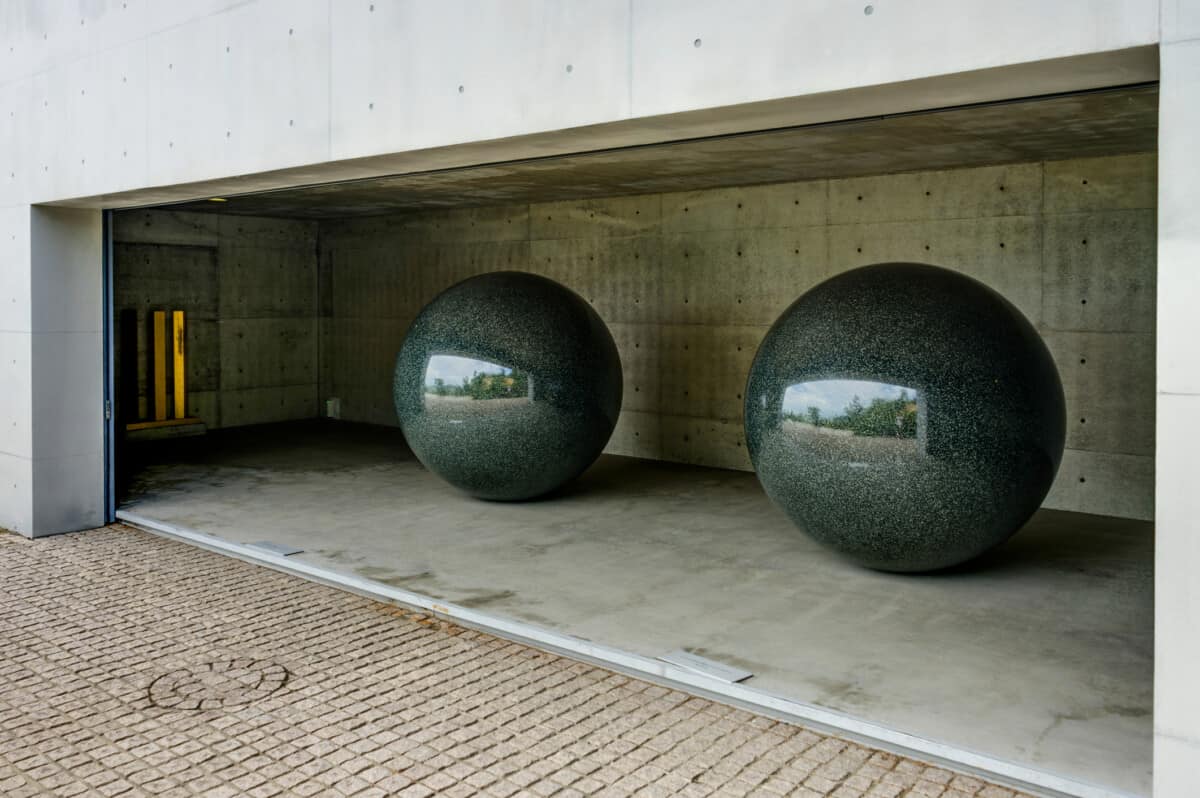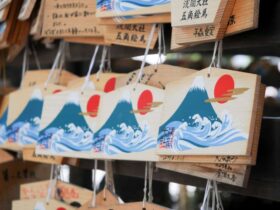Naoshima is a Japanese island revered for its modern art installations, museums, and architecture. Despite its close proximity to Okayama, the island is surprisingly rural and tranquil. The pleasant weather, sunny beaches, and art attractions make Naoshima a popular tourist destination.
Located in the Seto Inland Sea, many of Naoshima’s buildings were designed by famed Japanese architect Tadao Ando.
Visitors can stroll through the island’s many modern art museums for modest admission fees. There are also numerous unique hotel accommodations available.
Art Museums of Naoshima
Once a sleepy beach retreat with few points of interest, Naoshima began emerging as an art destination in the 1980s. This transformation was thanks to the Benesse Corporation, which funded and installed much of the island’s art.
Naoshima’s art museums and installations are now among the most famous in Japan. Chichu Art Museum and Benesse House especially are top-rated attractions.
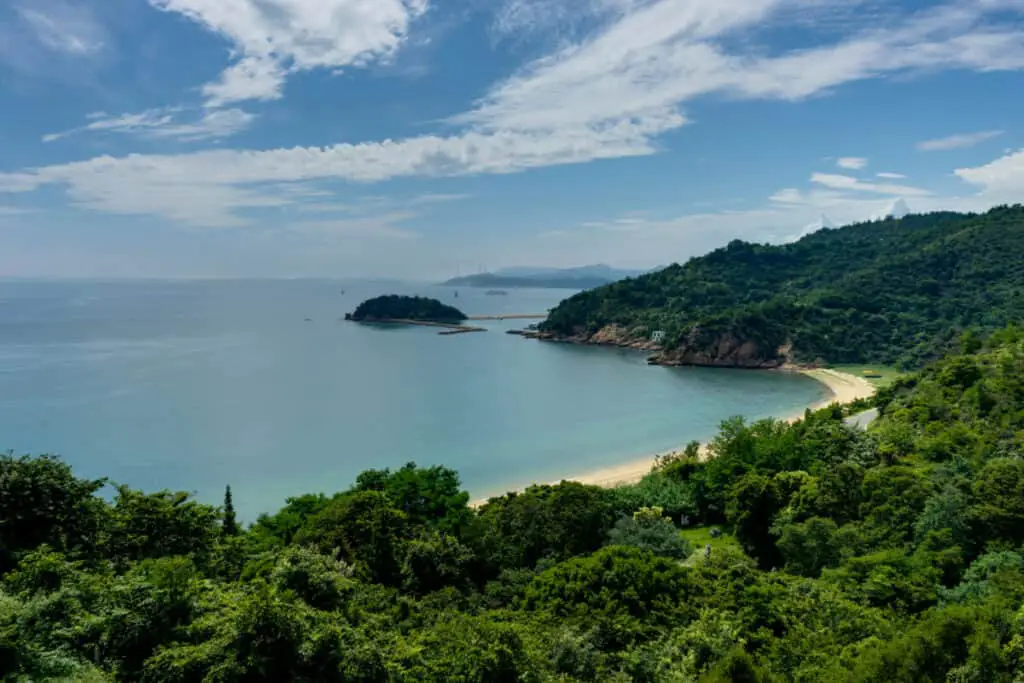
Since the island is only about 5.5 square miles (14.22 km²), most of these locations are within walking distance of each other. Eager tourists can visit most of the attractions within a day. However, the island is best enjoyed while relaxed and taking the extra time to savor it all.
Naoshima Island Location Via Google Maps
Chichu Art Museum
Designed by Tadao Ando, Chichu Art Museum is as much an art museum as it is a sprawling work of art itself.
Chichu, which means “in the earth,” is an apt name for this museum as the complex is almost entirely underground. However, the museum is illuminated almost exclusively through natural light thanks to holes and crevices in the architecture.
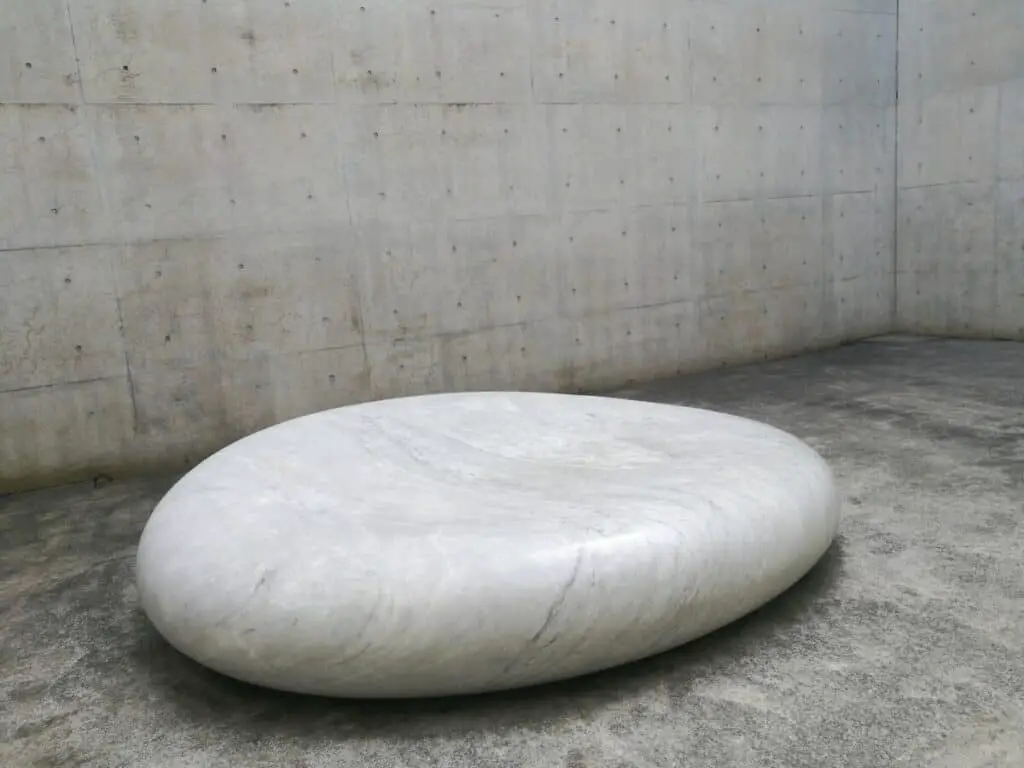
Chichu’s collection of paintings is small but mesmerizing. It includes a series of “Water Lilies” by Monet, the color and softness of which contrasts with the museum’s minimalist concrete interior.
There are also some works by James Turrell that are stunning examples of the Light and Space movement. Called “Skyspaces,” this series turns minimalist rooms into works of art through the dynamic use of light.
Chichu Art Museum Official Website
Admission to the Chichu Art Museum is ¥2100 (~$18.25) for adults and free for children. However, advanced reservations are required to visit. There is also a cafe and gift shop on the premises.
Benesse House
The Benesse House Museum is truly a one-of-a-kind blend of museum and resort.
Part of the Benesse Art Site where Chichu resides, Benesse House consists of four buildings carefully crafted by architect Tadao Ando. They sport both works of art and accommodations for guests.
Visitors can see exhibits during the day in the Modern Art Museum building, which overlooks the sea. But at night, only the guests of Benesse House can stroll among the works.
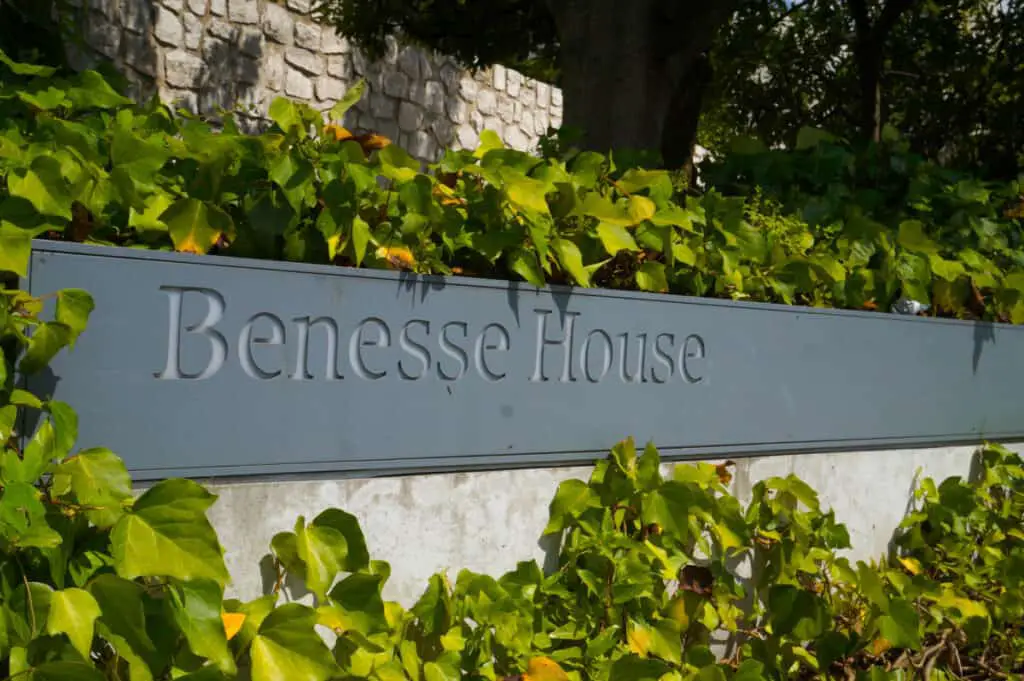
Benesse House Official Website
In fact, the accommodations themselves are beautiful works of architecture. Visitors can stay at the “Oval” and be mesmerized by its leafy green halo and dark pool. Or at the wooden “Park” building with its cozy rooms and scenic views of open-air art.
Guests of Benesse House also have exclusive access to Benesse House Park. This collection of art includes works from Hiroshi Sugimoto, where Naoshima is the subject.
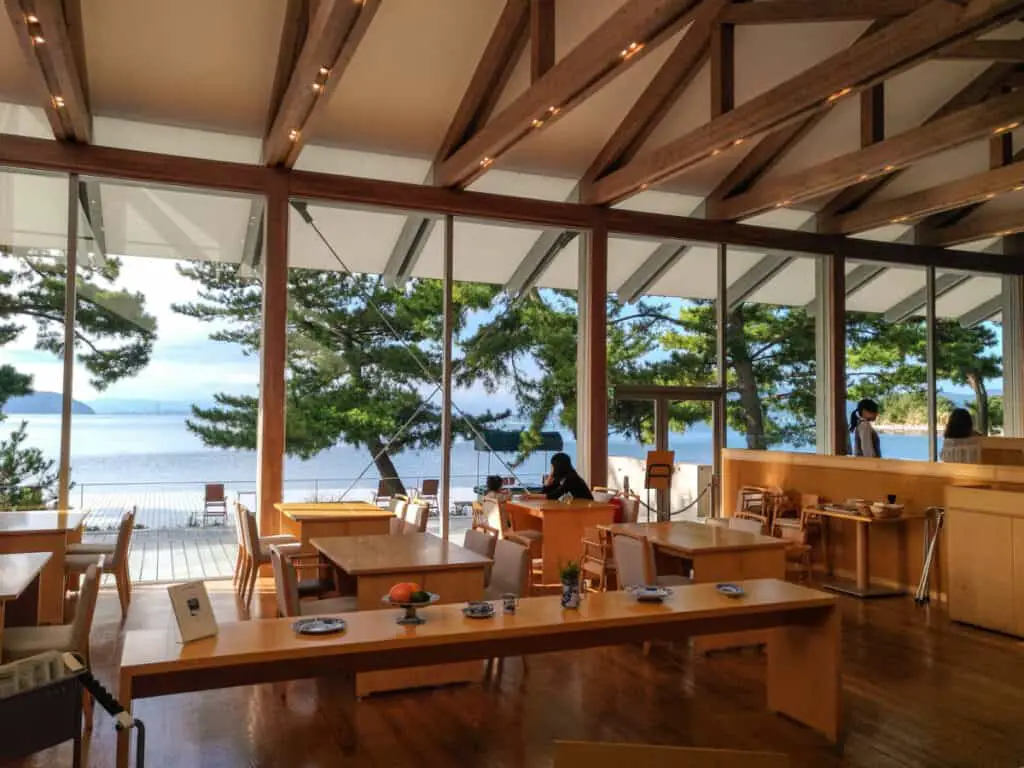
Benesse House is one of the few places where you can spend a night truly surrounded by art. Rooms range in price depending on which building you choose and the time of year. Admission to the Benesse House Museum is ¥1050 (~$9.12), and no reservation is required.
Lee Ufan Museum
Opened in 2010, the Lee Ufan Museum features open-air artworks that blend harmoniously with the landscape.
This site is the result of a collaboration between Tadao Ando and Korean artist Lee Ufan. Ando’s brutalist-like concrete architecture complements the organic and minimalist artworks of Ufan.
The museum is clearly artificial. And yet, it seamlessly incorporates the surrounding nature of Naoshima. Plants grow aesthetically among the sculptures, and the artworks themselves consist primarily of innocuous steel plates and stones.
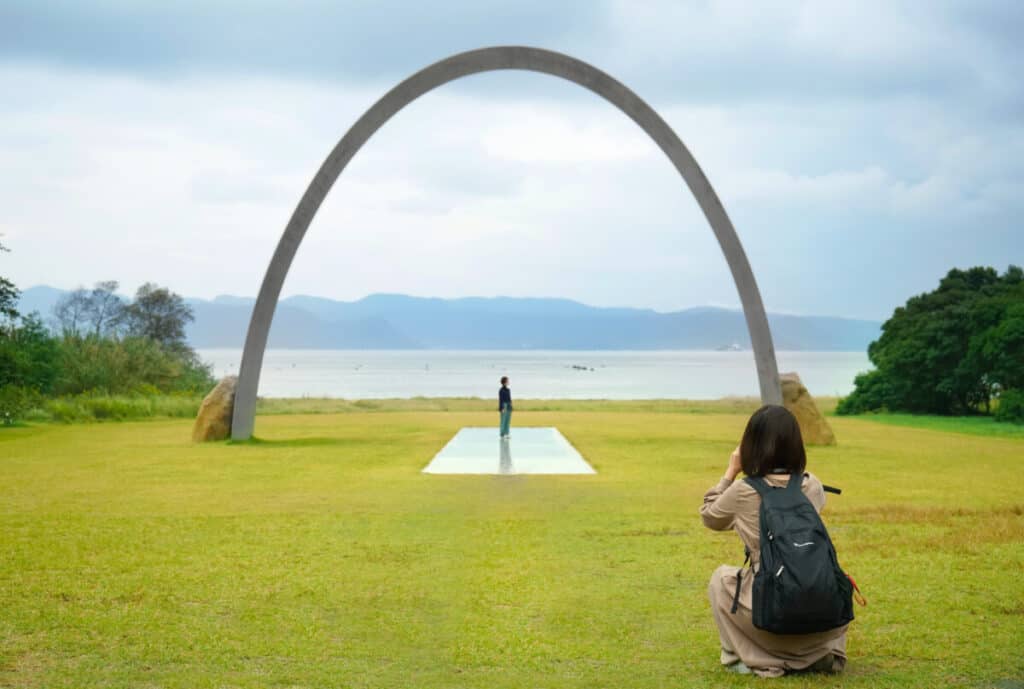
The most iconic feature is the tall geometric pole near the museum’s entrance. This piece helps accentuate the clash of vertical and horizontal spaces between the architecture and landscape.
Lee Ufan Museum Official Website
Those enamored by the idea of visiting the Lee Ufan museum can do so for only ¥1050 (~$9.12). No reservation is required. If you’re staying at Benesse House, the Lee Ufan Museum is only a five-minute walk away.
There is also a gift shop on the premises that sells books about Ufan and shirts inspired by his work.
Other Attractions on Naoshima
While the museums of Naoshima are remarkable, it has even more to offer visitors. Spread across the laid-back island are several other attractions worth visiting.
Some attractions are near the Benesse Art Site, such as the famous yellow and black “Pumpkin” sculpture. But visitors can find other points of interest in the island’s two tiny towns: Honmura and Miyanoura.
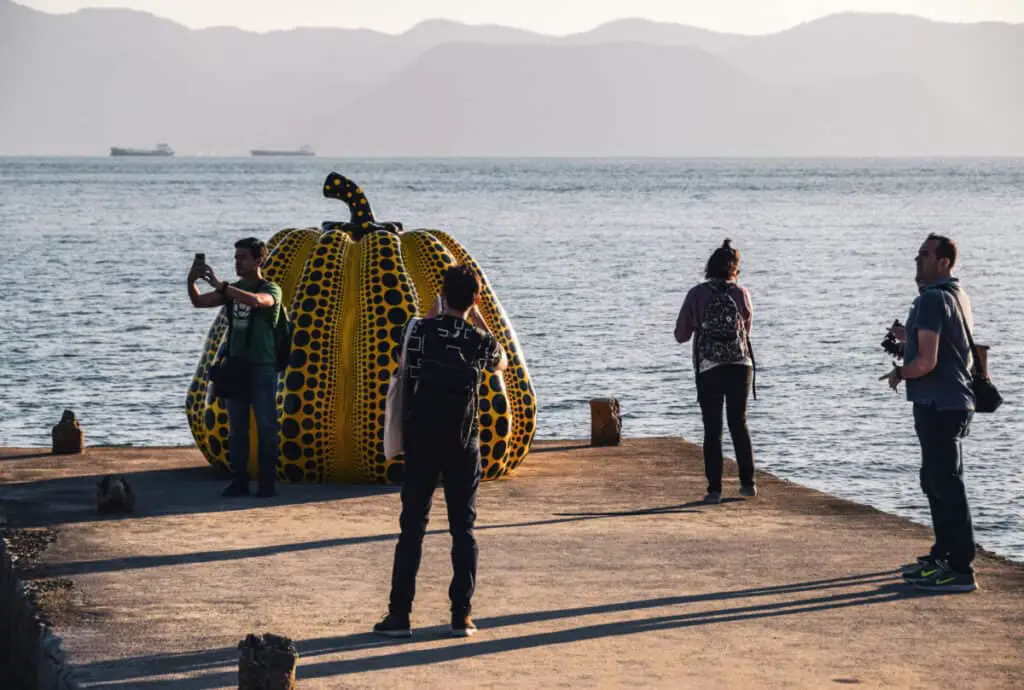
Thankfully, since Naoshima is only about 5.5 square miles, getting around is relatively easy. It won’t take long to travel between sites, so walking or biking is recommended for optimal sightseeing.
The “Pumpkins”
Probably the most well-known feature of Naoshima is its “Pumpkin” at the Benesse Art Site.
Designed by the famed artist Yayoi Kusama, this iconic pumpkin-shaped sculpture stands 6 ½ feet tall and 8 feet wide (around 2m x 2.5m). It features hypnotic black polka dots on a yellow background.
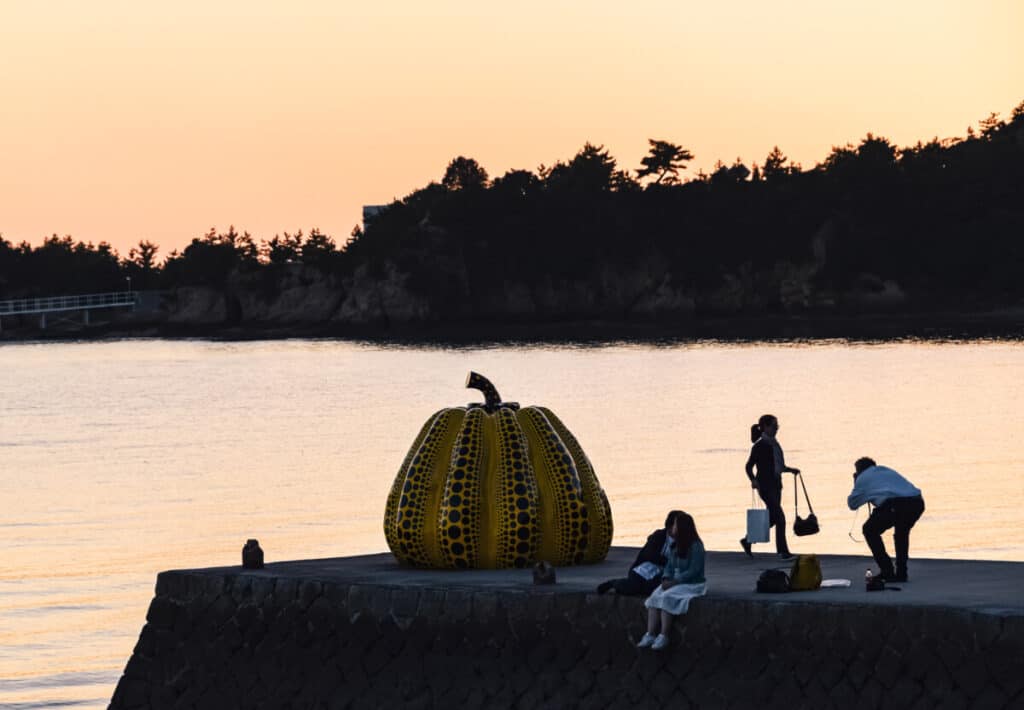
Sitting at the end of a pier near the Benesse House, the “Pumpkin” is the most popular photo spot on the island. Those hoping to take pictures with it will generally have to wait in a long line. However, the wait is worth it to have such a unique photo as a souvenir from Naoshima.
Another lesser-known “Pumpkin” sculpture resides on the island’s western side, in Miyanoura village.
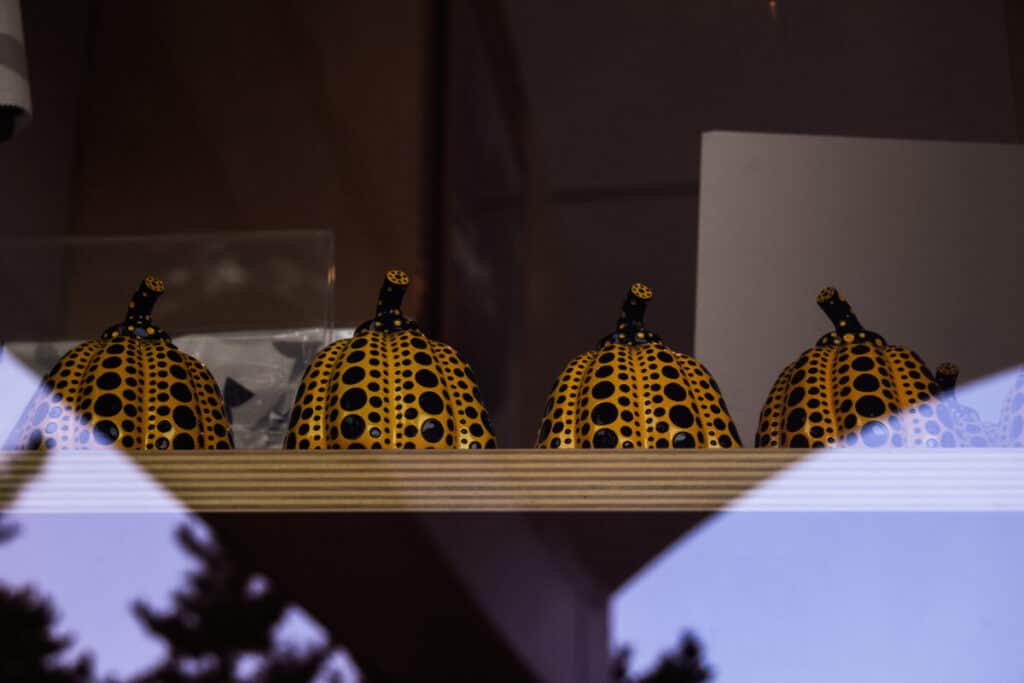
Also by Yayoi Kusama, this red “Pumpkin” features polka dots blended with sporadic holes. The sculpture serves as a memorable greeting for visitors who come to the island by ferry.
I Love Yu
Located in Miyanoura village, I Love Yu is both a bathhouse onsen and a work of art. Designed by Shinro Ohtake, this building features a collage-like blend of sculptures, tile art, and kaleidoscopic glass.
The main room includes a giant elephant statue strutting along a central divider, with baths and showers on both sides. Images of erotica line the bottom of the baths, while tile murals of abalone divers adorn the far wall.
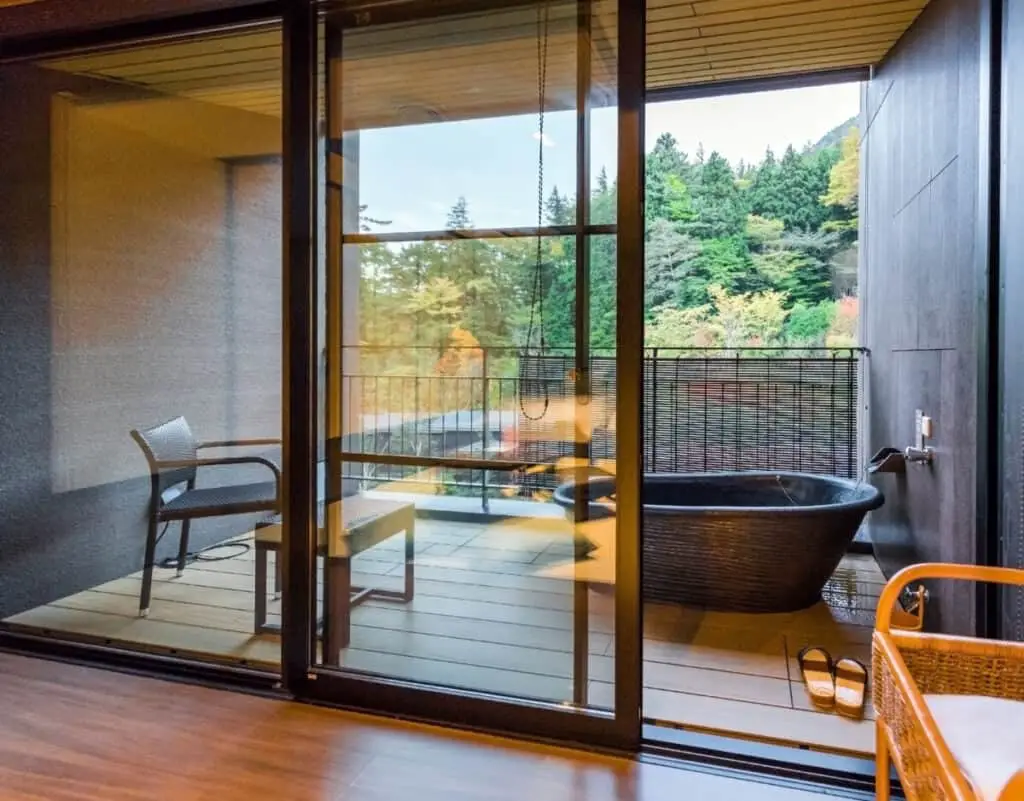
However, that’s just the beginning. Art radiates from every part of the building, from its changing rooms to its toilets. It’s genuinely one of the most quirky and one-of-a-kind places in the world.
I Love Yu Bathhouse Official Website
The bathhouse also has a gift shop so that visitors can keep a memory of this unique modern art bathhouse. Admission is ¥660, and the bathhouse is typically closed on Mondays.
Art House Project
Found in Honmura village on Naoshima’s East coast, the Art House Project is easy to miss. It incorporates seven buildings into a scattered patchwork of art venues.
The sites themselves vary from abandoned homes to a repurposed Shinto Shrine. And many of them still blend in with other buildings when viewed from the outside.
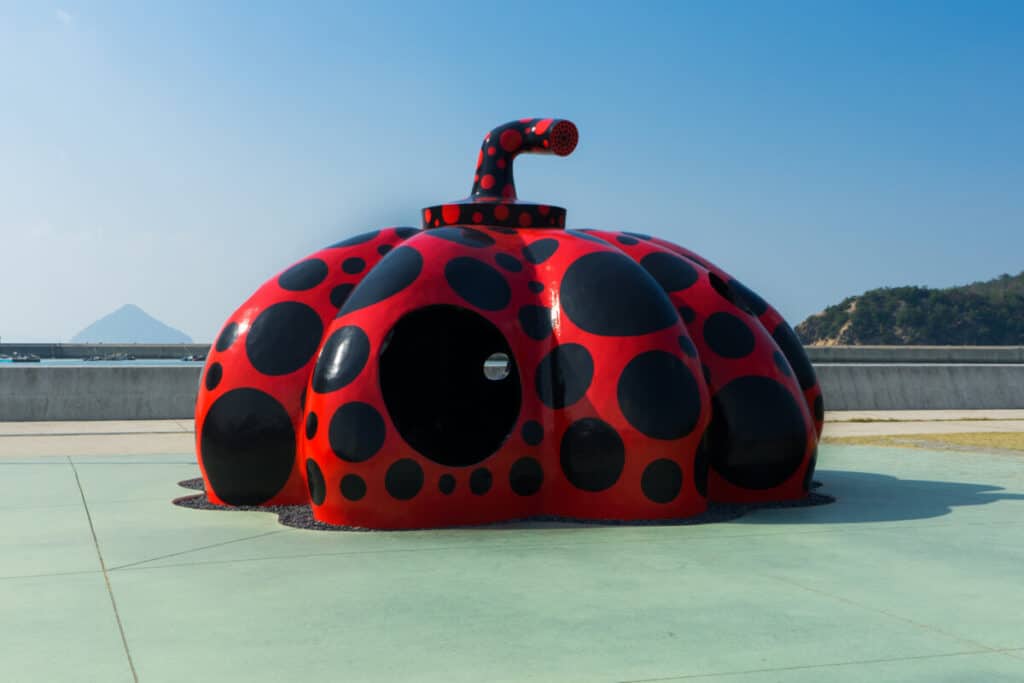
However, artists have turned the interiors into captivating works of art.
Shinro Ohtake, who also designed I Love Yu, is the mastermind behind one of these buildings: Haisha. Once the home of a dentist, the interior now has a dream-like mix of neon lights and sculpture.
Another famous art house in the project is Kadoya. The building features a room known as Sea of Time ‘98, where numerous LED lights glitter in a dark pool of water. The effect is both strangely calming and surreal.
The easiest way to see most of the houses is to buy a combination ticket. It costs ¥1050 (~$9.12) and gives access to all but the Kinza house. Alternatively, visitors can pay ¥420 ($3.65) to visit each place individually. Kinza is only accessible through reservation.
Visiting Naoshima
Despite often feeling rural and remote, Naoshima is very close to some major cities. You can reach it most conveniently via ferry boat.
Ferries make trips to both of Naoshima’s towns of Miyanoura and Honmura.
The easiest way to make the ferry trip is from Uno Port. Travelers can reach it from Okayama Station by taking the JR Line to Uno Station. From Uno Station, the ferry is a brief walk South towards the pier.
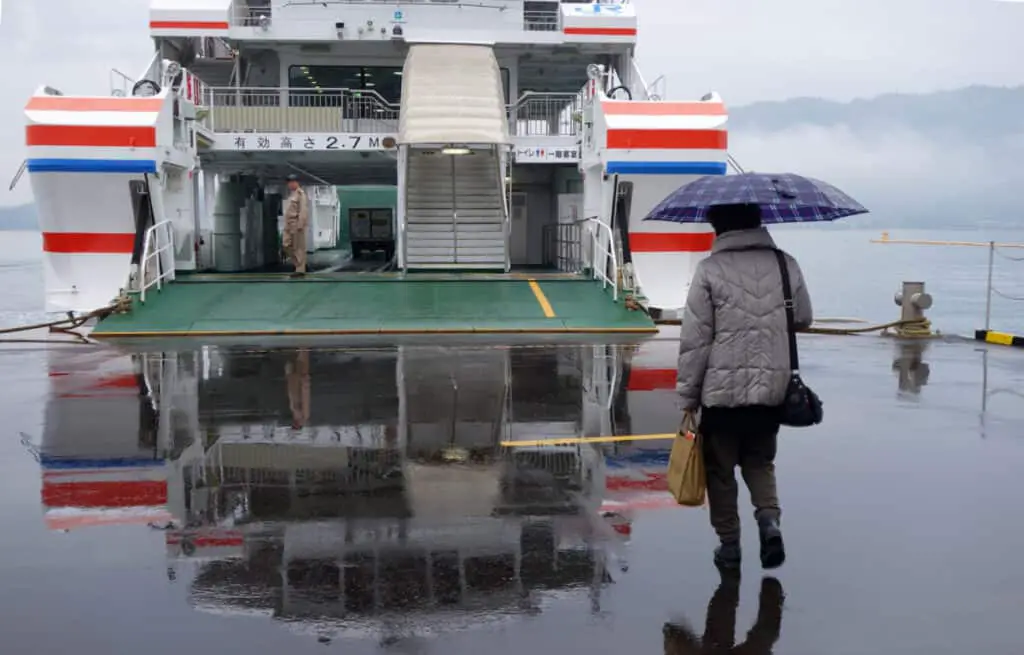
The Uno Port ferry is ¥300 one way and takes around 20 to 25 minutes.
One can also take a ferry from Takamatsu Port. The easiest way to reach it is by taking the JR Marine Liner at Okayama Station to Takamatsu Station.
After reaching Takamatsu Station, the port and ferry is a short walk away. The Takamatsu ferry is a longer trip at around 50 minutes but costs a modest ¥500 (~$4.30). Speed boat trips that only take 25 minutes are available, but they cost ¥1200 (~$10.43).

